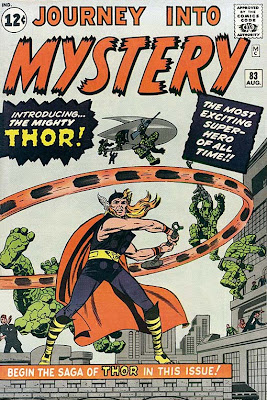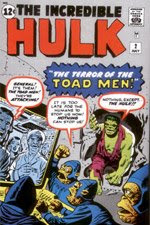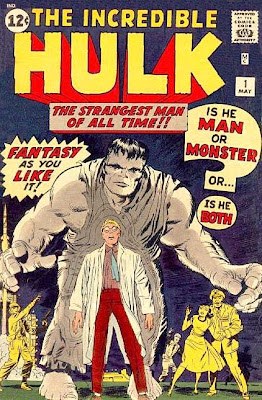 Gotta do at least one more "last stand" post before moving on.
Gotta do at least one more "last stand" post before moving on.
Bogart did most of his work at Warner Brothers, but in 1943, he jumped over to Columbia Pictures to star in the excellent "Last Stand" war movie Sahara.
-
-
-
-
-
-
Bogie plays the commander of a Grant tank, an odd-looking armored vehicle that carried a light 37mm cannon in its turret and a larger 75mm cannon sticking out of its front hull. He and his two surviving crewman are stationed in North Africa, cut off from their own forces by the attacking Germans.
Soon, though, the Americans join up with a multi-national group of stragglers. They also pick up a couple of prisoners--a rather pathetic Italian infantryman and a hard-core Nazi pilot.
The group finds a water hole located in some old ruins. While filling up their own canteens, they learn that a strong German force is approaching. Bogart wants them to stay and defend the ruins, keeping the Germans from the desperately needed water and thus buying the British Army time to re-organize. The others, some a bit reluctantly, agree. When the Germans arrive, they demand the tiny Allied force surrender. Bogie tells them that instead he'll trade them water for their guns. He doesn't mention that, in the meantime, the well has dried up anyways.
What follows are some superbly choreographed and photographed battle scenes. The Allies dig in the tank, dig trenches and set up machine guns. They do manage to hold off the enemy, but they themselves are getting killed in ones or twos every time the Germans attack. It's exciting and tense, helped enormously by the fact that you really can't predict who is going to get killed at any one time. Bogart gives a typically strong performance, backed up by the pool of skilled character actors that seemed to fill Hollywood to the brim during the Studio Era. Louis Mercier is particularly good as a Frenchman who has seen his country already fall to the Nazis.
It's a wartime production, so it's full of the sort of wartime propaganda you would expect from such a film. The characters are all a lot more likely to break into a patriotic speech than you would realistically expect a soldier to be when he is more immediately worried about getting his head blown off.
But several elements inherent to the film keeps it all from becoming corny. First, the dialogue, including the patriotic stuff, is very well written. Each little speech or comment sounds appropriately in character for whomever is speaking. When one of the British soldiers, for instance, makes a point about the "dignity of freedom," it sounds like something that particular guy would say--even if he wouldn't, in real life, stop to say it in the middle of a life-and-death battle.
The dialogue is also helped by the basic truths backing it all up. There really is an inherent dignity to basic democratic freedom.. There really are ideals worth fighting and sometimes dying for.
The best speech actually comes from the Italian prisoner, played by the great character actor J. Carroll Naish. It comes when the German prisoner tries to convince him that it's their duty to escape. The Italian, who has by now had some time to think things over, replies:
Italians are not like Germans. Only the body wears the uniform, not the soul. Mussolini is not so clever like Hitler. He can dress his Italians only to look like thieves, cheats and murderers. He cannot, like Hitler, make them feel like that. He cannot, like Hitler, scrap from the conscience the knowledge that right is right and wrong is wrong. Or dig a hole in their heads to plant his own Ten Commandments: steal from thy neighbor; cheat thy neighbor, kill thy neighbor... But are my eyes blind that I must fall to my knees to worship a maniac who has made of my country a concentration camp, who has made of my people slaves? Must I kiss the hand that beats me, lick the boot that kicks me, no! I rather spend my whole life living in this dirty hole than escape to fight again for things I do not believe against people I do not hate. As for your Hitler, it's because of a man like him that God - my God - created hell!
It's a great scene--heck, it's practically Shakespearean--played with real passion by Naish.
Black actor Rex Ingram is also in the film, playing a soldier in the French Colonial army. What's most noteworthy about this (considering the film was made in an age when racism was still an accepted part of our social makeup) is that he's just one of the guys, accepted by the others without comment as a friend and fellow warrior. The only time his color is really mentioned is when the German prisoner shies away from being searched by him. Bogie tells the German "Don't worry. It won't rub off." Later, there's a really human moment involving Ingram and Bruce Bennett (who plays one of the tank crew), in which Ingram explains logically why his faith allows multiple wives, then further explains why he personally only dares have one.
Sahara is a classic "Last Stand" movie. With great acting, heartfelt dialogue, well-choreographed battle scenes and beautiful black-and-white photography, it's really worth your time to get hold of a copy and watch it.
















